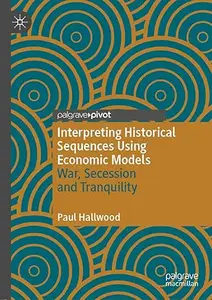Paul Hallwood, "Interpreting Historical Sequences Using Economic Models: War, Secession and Tranquility"
English | 2020 | pages: 131 | ISBN: 3030538532 | PDF | 2,7 mb
English | 2020 | pages: 131 | ISBN: 3030538532 | PDF | 2,7 mb
This Palgrave Pivot presents theoretical models that explain common historical sequences, such as wars of secession, the rise and fall of empires, and international war. The book uses a rational choice model to frame the incentives of specific groups coming together in a polity or leaving it. These incentives are then set in a theoretical framework to determine the outcome―unity or secession, peace or war―and are demonstrated through historical examples. The book provides two longer case studies looking directly at motives for and against secession: the first on the American Civil War from the point of view of the Confederacy, and the second on efforts by the UK government to stem the tide of Scottish independence. Another case study discusses peacekeeping as aimed at reducing the costs of secessionist wars. With its accessible use of economic theory and ability to bring to life real-world examples of conflict and secession, this book is ideal supplementary reading for courses in international relations, conflict studies, global economics and economic history.
My Link



